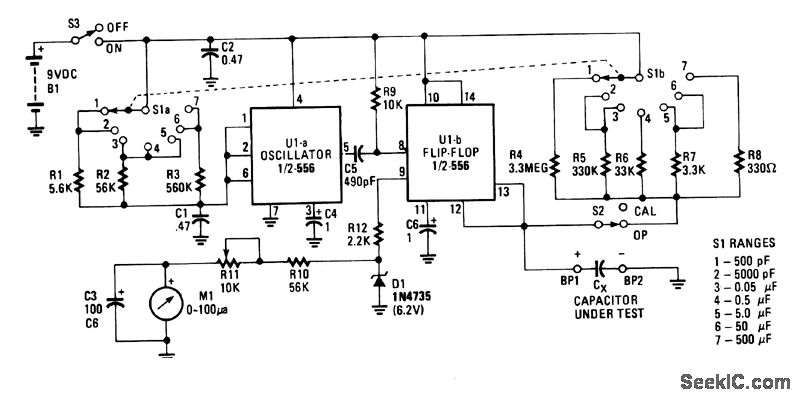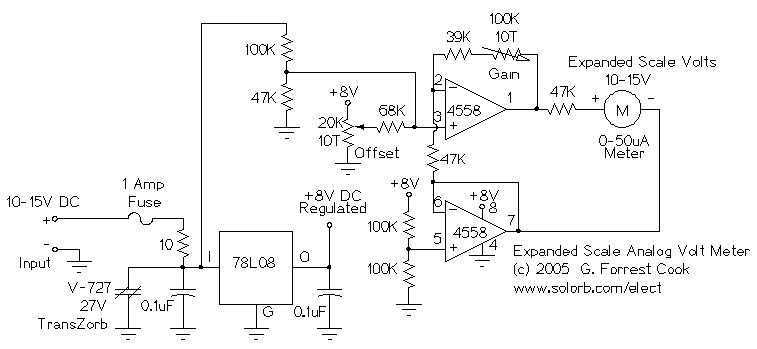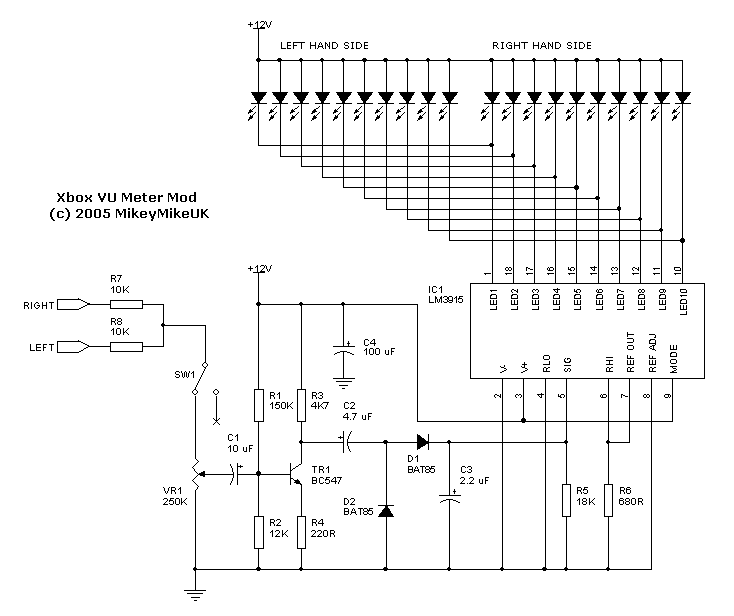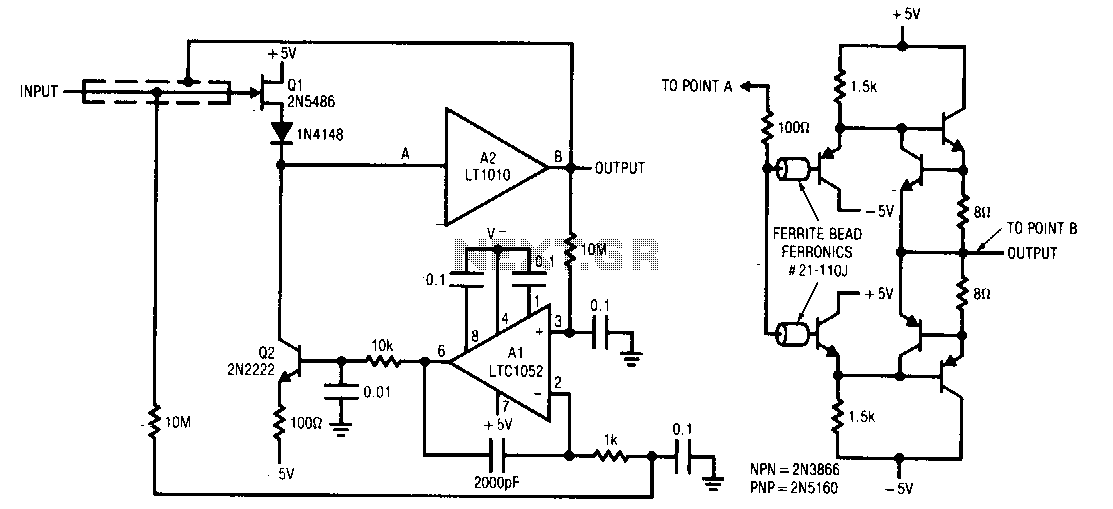
CAPACITANCE METER

U1a functions as an oscillator, while U1b serves as the measurement component of the circuit. It transforms an unknown capacitance into a pulse-width modulated signal, similar to the operation of an automotive dwell meter. The meter operates linearly, meaning that the proportion of time the output is high is directly correlated to the unknown capacitance (CX in the schematic). Meter M1 measures the average voltage of these pulses, given that its mechanical frequency response is lower than the oscillator frequency of U1a.
The circuit consists of two main functional blocks: the oscillator (U1a) and the measurement unit (U1b). The oscillator generates a continuous waveform, typically a square wave, which is modulated in width based on the capacitance being measured. This modulation occurs through a feedback mechanism that adjusts the duty cycle of the output signal relative to the capacitance value.
U1b, the measurement section, is responsible for interpreting the modulated signal generated by U1a. It employs a pulse-width modulation (PWM) technique to convert the varying width of the pulses into a voltage signal that can be easily read by the meter. The linearity of the meter ensures that the average voltage output is a direct representation of the capacitance value. This is particularly important for applications requiring precise capacitance measurements, as it allows for straightforward calibration and interpretation of results.
Meter M1 is designed to capture the average voltage of the PWM signal, which reflects the duty cycle of the output from U1a. Due to its mechanical frequency response characteristics, M1 is optimized to provide accurate readings at lower frequencies, making it suitable for this application. The overall design ensures that the circuit can effectively measure unknown capacitance values with a high degree of accuracy, leveraging the relationship between pulse width and capacitance to deliver reliable results.
In summary, this circuit design effectively integrates an oscillator and a measurement unit to facilitate the conversion of unknown capacitance into a readable voltage signal, allowing for practical and efficient capacitance measurement in various electronic applications.U1a is an oscillator and U1b the measurement part of the circuit. It converts unknown capacity into a pulse-width modulated signal the same way an automotive dwell meter works. The meter is linear so the fraction or percentage of time that the output is high is directly proportional to the unknown capacitance (CX in the schematic).
Meter M1 reads the average voltage of those pulses since its mechanical frequency response is low compared to the oscillator frequency of U1a. 🔗 External reference
The circuit consists of two main functional blocks: the oscillator (U1a) and the measurement unit (U1b). The oscillator generates a continuous waveform, typically a square wave, which is modulated in width based on the capacitance being measured. This modulation occurs through a feedback mechanism that adjusts the duty cycle of the output signal relative to the capacitance value.
U1b, the measurement section, is responsible for interpreting the modulated signal generated by U1a. It employs a pulse-width modulation (PWM) technique to convert the varying width of the pulses into a voltage signal that can be easily read by the meter. The linearity of the meter ensures that the average voltage output is a direct representation of the capacitance value. This is particularly important for applications requiring precise capacitance measurements, as it allows for straightforward calibration and interpretation of results.
Meter M1 is designed to capture the average voltage of the PWM signal, which reflects the duty cycle of the output from U1a. Due to its mechanical frequency response characteristics, M1 is optimized to provide accurate readings at lower frequencies, making it suitable for this application. The overall design ensures that the circuit can effectively measure unknown capacitance values with a high degree of accuracy, leveraging the relationship between pulse width and capacitance to deliver reliable results.
In summary, this circuit design effectively integrates an oscillator and a measurement unit to facilitate the conversion of unknown capacitance into a readable voltage signal, allowing for practical and efficient capacitance measurement in various electronic applications.U1a is an oscillator and U1b the measurement part of the circuit. It converts unknown capacity into a pulse-width modulated signal the same way an automotive dwell meter works. The meter is linear so the fraction or percentage of time that the output is high is directly proportional to the unknown capacitance (CX in the schematic).
Meter M1 reads the average voltage of those pulses since its mechanical frequency response is low compared to the oscillator frequency of U1a. 🔗 External reference





